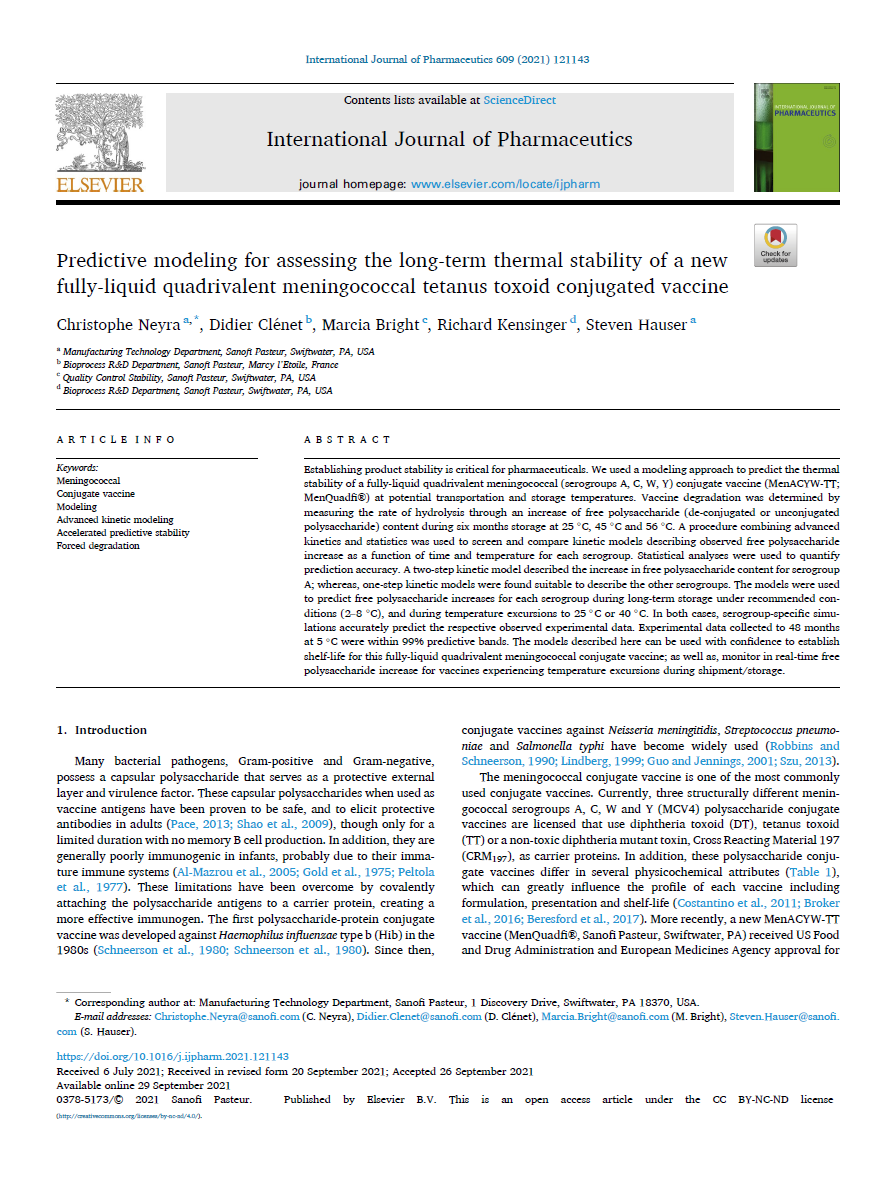Christophe Neyra 1 *, Didier Cl´enet 2, Marcia Bright 3, Richard Kensinger 4, Steven Hauser 1
+ More information
1 Manufacturing Technology Department, Sanofi Pasteur, Swiftwater, PA, USA
2 Bioprocess R&D Department, Sanofi Pasteur, Marcy l’Etoile, France
3 Quality Control Stability, Sanofi Pasteur, Swiftwater, PA, USA
4 Bioprocess R&D Department, Sanofi Pasteur, Swiftwater, PA, USA
* Corresponding author at: Manufacturing Technology Department, Sanofi Pasteur, 1 Discovery Drive, Swiftwater, PA 18370, USA. E-mail addresses: (C. Neyra), (D. Cl´enet), (M. Bright), Steven.Hauser@sanofi. com (S. Hauser).
Abstract
Establishing product stability is critical for pharmaceuticals. We used a modeling approach to predict the thermal stability of a fully-liquid quadrivalent meningococcal (serogroups A, C, W, Y) conjugate vaccine (MenACYW-TT; MenQuadfi®) at potential transportation and storage temperatures. Vaccine degradation was determined by measuring the rate of hydrolysis through an increase of free polysaccharide (de-conjugated or unconjugated polysaccharide) content during six months storage at 25 ◦C, 45 ◦C and 56 ◦C. A procedure combining advanced kinetics and statistics was used to screen and compare kinetic models describing observed free polysaccharide increase as a function of time and temperature for each serogroup. Statistical analyses were used to quantify prediction accuracy. A two-step kinetic model described the increase in free polysaccharide content for serogroup A; whereas, one-step kinetic models were found suitable to describe the other serogroups. The models were used to predict free polysaccharide increases for each serogroup during long-term storage under recommended conditions (2–8 ◦C), and during temperature excursions to 25 ◦C or 40 ◦C. In both cases, serogroup-specific simulations accurately predict the respective observed experimental data. Experimental data collected to 48 months at 5 ◦C were within 99% predictive bands. The models described here can be used with confidence to establish shelf-life for this fully-liquid quadrivalent meningococcal conjugate vaccine; as well as, monitor in real-time free polysaccharide increase for vaccines experiencing temperature excursions during shipment/storage.




